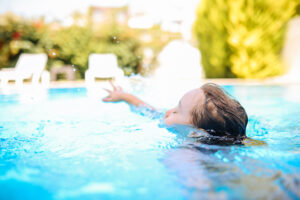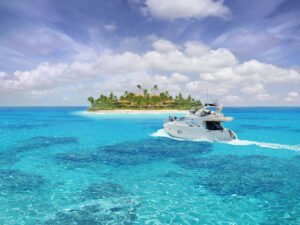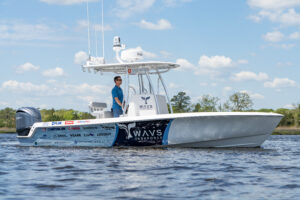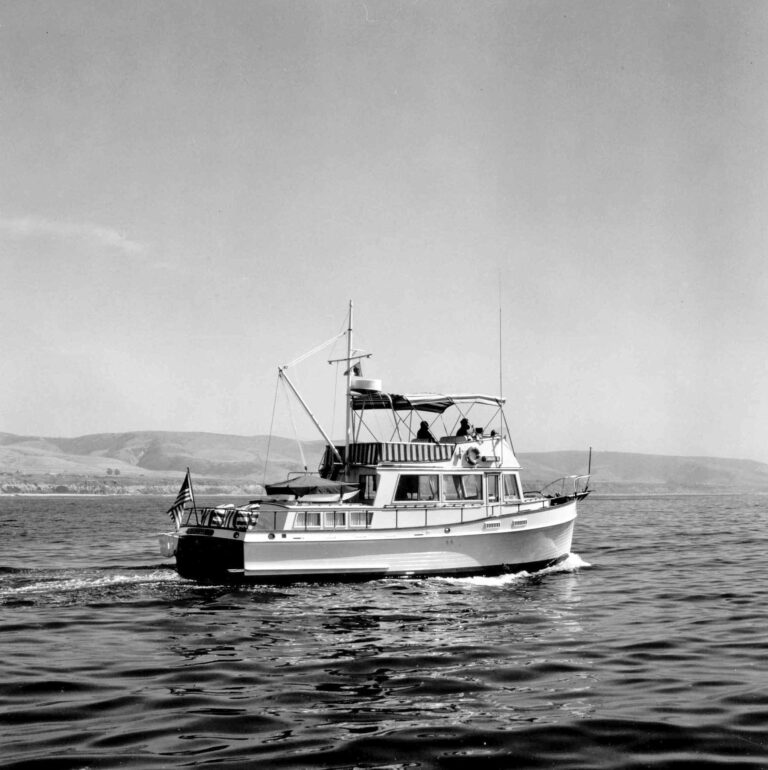Three sailors are presumed dead after setting out on a delivery despite a forecast of heavy weather
Three sailors are presumed dead after setting out on a delivery despite a forecast of heavy weather
The weather was thick and was about to get worse. The crew delivering Cat Shot, a new Voyage 440 Plus cruising catamaran en route to Port Townsend, Wash., from San Francisco, was no longer sailing. The three men had struck all canvas and set sea anchors to slow her down. Now all they could do was hang on for dear life as the 45-footer rose to the crests of the large seas and plummeted down their back sides.
It was pitch-dark, so they were unable to estimate wave height. But they felt the sting of the 50-degree water as it whipped across the deck, and they could read their instruments. “Winds from the south, 40 to 50 knots … all sails down … two sea anchors deployed,” they scribbled in the logbook Monday, Dec. 11, 2006, at 3 a.m. (PST), about 10 miles west of Cape Blanco, the westernmost point in Oregon and one of the West Coast’s treacherous capes. It was the last entry in a meticulously kept book, hinting at the conditions that would bring on disaster in the following hours.
Real-time data for Dec. 11, recorded by the weather buoy 16 nautical miles west of Port Orford, Ore., indicated top winds of 52 knots and peak wave heights of 25 feet. Four days later, on Friday, Dec. 15, the ship’s log was recovered from the wreckage after Cat Shot washed up on a beach south of Lincoln City, Ore., about 120 miles north of her last-known position. The boat was upside-down and dismasted, with most of the superstructure torn off.
After the catamaran was reported to Coast Guard Station Depoe Bay, a search-and-rescue operation was launched with C-130 aircraft, HH-60 Jayhawk and HH-65 Dolphin helicopters, small boats and shoreside search parties, but no sign of survivors was found. A body that washed up 70 miles south of the wreck Dec. 16 near Florence, Ore., had no connection to Cat Shot’s missing crew. The crewmembers were skipper John “Oggie” Anstess, 55, a resident of Great Britain; and deckhands David Rodman, 69, of Washington and Richard C. Beckman of California, who was believed to be 69.
Anstess, who for 14 years was a senior coxswain with the National Sea Rescue Institute in Durban, South Africa, had logged more than 35,000 ocean miles before 2004. That was the year he joined Reliance Yacht Management, the British company the boat’s builder, Voyage Yachts, hired for this delivery.
In an older posting to www.floatplan.com Beckman offered his services as a Coast Guard-licensed captain for sailing or motor vessels up to 100 tons. “I am a bluewater skipper with many, many miles of offshore experience … and have excellent credentials.” In a posting to www.topix.net, Rodman’s daughter, Sue Barkwood of Girdwood, Alaska, called her father “an endless adventurer … [who] spent his life in a truck driving across the United States. Now in retirement, he is fulfilling his dream of sailing the waters of the world.”
The Coast Guard says a manual 406 EPIRB and other survival gear, such as flares, were recovered in the vicinity of the wreck on the beach, inside a watertight bucket. “We have no information about distress signals from personal locator beacons, radio or EPIRB,” says investigating officer Lt. Adam Birst of Coast Guard Sector Portland, Ore. “This could indicate that the boat had capsized or pitchpoled very quickly. We found PFDs but did not recover a life raft. We have not been able to determine if the crew had worn life jackets or if they were injured.”
Pending further investigation and the calculation of the boat’s drift, the exact time and/or location of the capsizing were unavailable. Photographs of the upturned vessel on the beach show a line tied around the Saildrive on the starboard hull. Birst says it could have served as a tether for the life raft or for crewmen trying to stay with the capsized boat. Other pictures of the wreck show a missing forward crossbar.
“The impact on the beach destroyed so much of the boat that investigators were unable to determine if and when a possible failure might have occurred,” says Birst.
Cat Shot was the first Voyage 440 Plus sold to the Pacific Northwest, according to David Beavis of Voyage Yacht Charters in Annapolis, Md. She was being delivered from Cape Town, South Africa, to owner James Anderson of Renton, Wash., and was to be shown at the Seattle Boat Show from Jan. 25 to Feb. 3. The boat already had covered about 13,000 nautical miles, which included stopovers in the Caribbean, Mexico, Southern California and San Francisco. It was on the last leg, less than 500 miles from her destination, that Cat Shot ran into one of the worst storms to hit the Oregon coast in more than a decade. The storm packed top winds near 100 mph, knocking down power lines and trees, causing millions of dollars in property damage, and taking the lives of three climbers who made national headlines when they were trapped on Mount Hood.
Cat Shot had pulled into San FranciscoBay Dec. 7 and tied up to the guest dock of OysterPointMarina, near San FranciscoInternationalAirport, to pick up Rodman, who had flown in from Seattle to join the boat. Rodman was a last-minute replacement for Gary Tucker, whom the San Francisco Chronicle identified as a contractor from Virginia.
“I feel like the guy who just missed the doomed plane,” says Tucker in an Internet posting.
Beckman had joined Anstess at a stop in San Diego. “The skipper asked for a weather report, and I printed out the NOAA forecast for the waters north of San Francisco,” says Jim Merlo of the Harbor Patrol at Oyster Point. “A severe storm was about to hit on the 8th, and there are no anchorages on that coast that offer good protection in strong southerly winds. Plus, the few harbors of refuge are all behind bars that are tricky to navigate.”
Nevertheless, Cat Shot left Oyster Point at 1:30 p.m. Dec. 7, according to Merlo, as the crew mulled the possibility of stopping closer to the Golden Gate and staying with friends in San Francisco. Merlo says he passed on the number of the local Coast Guard station to Anstess so he could get the latest weather updates.
The Coast Guard says Cat Shot left San FranciscoBay Dec. 8 and proceeded up the coast. Tucker told the Chronicle that Beckman had phoned his wife while under way, informing her that the boat was heading north and that the crew was doing fine. The weather mellowed somewhat Dec. 9 and 10, but the next storm was gathering steam in the Gulf of Alaska. The morning of Dec. 11, the forecast issued by the National Weather Service for the coastal waters between Florence and Cape Blanco, the area north of Cat Shot’s last recorded position, included a storm warning, a warning about hazardous seas, and winds predicted from the south at 50 knots, with gusts to 65 knots. Wind waves were to reach 12 to 15 feet, running into a west swell of 19 feet.
“Waves with a long fetch from the south intersecting with large westerly swells can lead to wave super-positioning,” says Sven Nelaimischkies, meteorologist of the marine program at the Medford, Ore., weather station. “If this happens, 15-foot waves can build to 45 feet or more.”
A month earlier, on Nov. 12, the 440-foot container ship Westwood Pomona was hit by a rogue wave in the same waters, a little farther offshore. The Associated Press reported that a 70-foot wave smashed several windows of the command bridge, injured one crewman, and damaged the ship’s primary electronics, forcing it to put into Coos Bay, Ore., for repairs.
“There [are] a number of wrecks off CapeBlanco,” says Nelaimischkies, explaining two typical weather patterns. “A thermal trough to the south produces localized northerly gales during the summer, whereas the strong southerlies of an approaching winter storm are funneled along the shore by the CoastRange, which forms a barrier jet.”
With violent weather in the forecast and a dangerous coast with limited opportunities for seeking refuge, the question remains: Why didn’t the skipper wait for more favorable conditions? Internet chat rooms were buzzing with comments and speculation about the weather and the crew’s chances of being rescued without sending a distress call or activating an EPIRB. Many were critical of the skipper’s decision to try and deliver the catamaran along the exposed Northwest coast during this particularly active storm season.
Nick Irving, director of Reliance Yacht Management, says his office tracked Cat Shot during the voyage and received regular updates. He spoke to Anstess before he got under way from San Francisco but didn’t discuss the weather situation. “The decision about leaving port has to be the captain’s [because] he knows the local conditions, his boat and his crew.”
Irving explains that his skippers routinely go through extensive pretrip checklists before requesting clearance for departures and filing their float plans. “We instructed Oggie to buy a new life raft for Cat Shot before leaving Cape Town, which he did,” he says.
Irving also thought that the recovered EPIRB could have been part of Anstess’ personal safety gear. “It’s easy to sit in an armchair with the heater on and second-guess the skipper,” he says. “Reliance does about 100 deliveries per year, and I know John was the best man for the job. Besides, he was a personal friend.”










